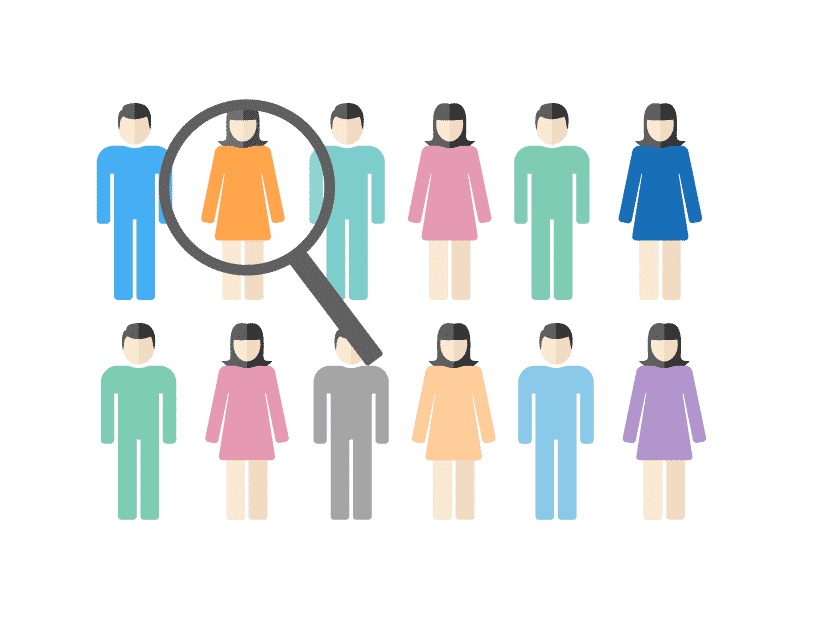A dazzle of zebras: Ehlers-Danlos Syndromes

By Hannah Eccard
On their website, The Ehlers-Danlos Society explains why people with Ehlers-Danlos Syndromes (EDS) call themselves zebras.
“Medical students have been taught for decades that, ‘When you hear hoofbeats behind you, don’t expect to see a zebra.’ In other words, look for the more common and usual, not the surprising, diagnosis.” 1
People with EDS are the unexpected zebras. This rare connective tissue disorder characterized by joint hypermobility, skin elasticity and tissue fragility has recently, through the efforts of The Ehlers-Danlos Society, become more well known. Unfortunately many people still suffer through a traumatic and long diagnosis journey. The delay in diagnosis has consequences best expressed by patient advocate Michael Bihovsky:
“EDS is a scary and challenging diagnosis, but the consequences of not knowing are far greater than that of a correct diagnosis. EDS symptoms can range from the very mild to the extremely severe. One thing is certain, though: If I had received a diagnosis back when my symptoms were mild, I would be living a very different life now. Every single day, in my struggle to actualize the person I still can be, I cannot help but mourn the person I could have been.” 2
Inspire partnered with The Ehlers-Danlos Society to create the Ehlers-Danlos Syndromes and Related Disorders Support Community on Inspire. The community has almost 70,000 members – 42,000 from the US – actively engaged in supporting each other. We recently surveyed the community to learn more about their experience with the condition.
Survey results
Nearly 1500 members (1489) participated in the survey (84% from the US) conducted in August 2018. Almost half of the respondents (48%) are between 18 and 40 years old. The respondents, as well as the the community on Inspire, are predominantly female. Nearly one-fifth (18%) were caregivers and of those, 12% also have EDS. One-third of the carers (33%) care for more than one person with EDS.
An overwhelming number (93%) of survey respondents have experienced symptoms for over five years. Half of diagnosed respondents received their diagnosis in the last one to five years. Over one-third (34%) had been diagnosed over five years ago, indicating that the need for support for EDS patients continues long after diagnosis. Seventy-eight percent of the group had been diagnosed with Hypermobile EDS, the most common type of EDS. [The Ehlers-Danlos Society has been actively engaged in clarification of definitions of the various types of EDS and moving research forward to identify genetic changes that cause this group of rare conditions.]
Facing skepticism
Being an invisible disease, many of those with EDS have experienced doubt when describing their symptoms to others. When we asked “Have you experienced skepticism or disbelief when describing your condition to others?”, three out of four members (73%) said they had experienced disbelief from a medical professional. Seventy-two percent of respondents have been told that they look too healthy to be sick. Seventy percent have been told they are overly sensitive or imagining their experience. This skepticism from health care professionals and others has negatively impacted over one-third (35.8%) of these patients when they seek to obtain disability accommodations. Only 7% of participants said that they had not experienced skepticism.

Informational resources
Respondents rely heavily on the Internet for information on their condition. Not surprisingly, this group favors The Ehlers-Danlos Society informational materials– 83% use The Ehlers-Danlos Society’s website, magazine or other publications as a resource. Participants also depend on medical research organizations like the Mayo Clinic and Cleveland Clinic (72%), social media sites (63%), and other EDS patients or caregivers (58%).
Online patient influencer
The Internet is a go-to resource for our members, and there are several key online patient influencers. One such patient influencer who appeals to teens and young adults with EDS is Amy Lee Fisher. A 21 year old woman originally from Britain, now living in Australia, she experiences some of the comorbidities associated with EDS, like gastroparesis, postural tachycardia syndrome, intestinal dysmotility, mast cell activation disorder, chronic fatigue syndrome and heart murmur among others.3 She has an Instagram channel with 15,000 followers and is an online vlogger with over 94,000 subscribers to her Amy Lee Fisher youtube channel and 45,000 to her channel, Amy’s Life. Here she explains EDS to people unfamiliar with the condition.
EDS negatively impacts patients and caregivers, creating challenges in serious, life threatening comorbidities like gastroparesis, dysautonomia, POTS and for some types,vascular and heart involvement including aortic valve or mitral valve involvement, muscle hypotonia, corneal thinning and embrittlement. Additionally, they face financial, psychological and social blows. The US membership of the Ehlers-Danlos Syndromes and Related Disorders Support Community on Inspire represents up to 59% of those diagnosed with EDS in the US. Our survey indicates that a substantial number of patients with EDS suffer from a reduced quality of life.
Inspire offers a trusted community to patients and caregivers. Our goal with this blog, this website and our content is to provide the life science industry access to the true, authentic patient voice. In so doing, we support faithful operationalization of patient-centricity. Take a look at our case studies, eBooks and news outlet coverage.
References:
1https://www.ehlers-danlos.com/why-the-zebra/
2Bihovsky, M. (2015). Living with Ehlers-Danlos Syndrome: “Sometimes I just don’t have it in me to be inspirational.” Experts by experience. Retrieved from https://corp.inspire.com/resources/ebooks/
3https://www.amyleefisher.com/single-post/2018/06/18/My-First-Post-Welcome






